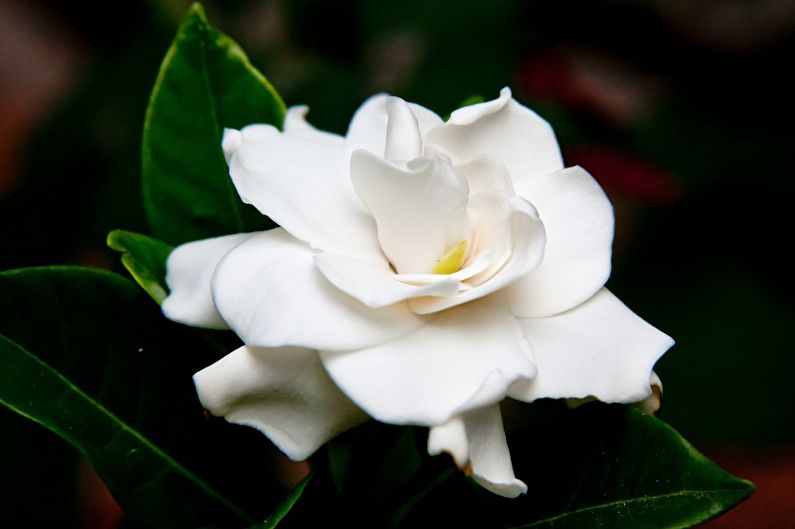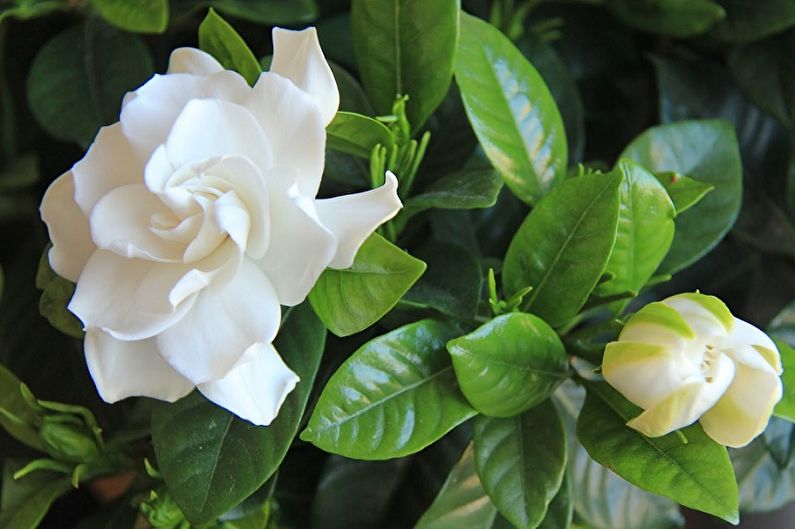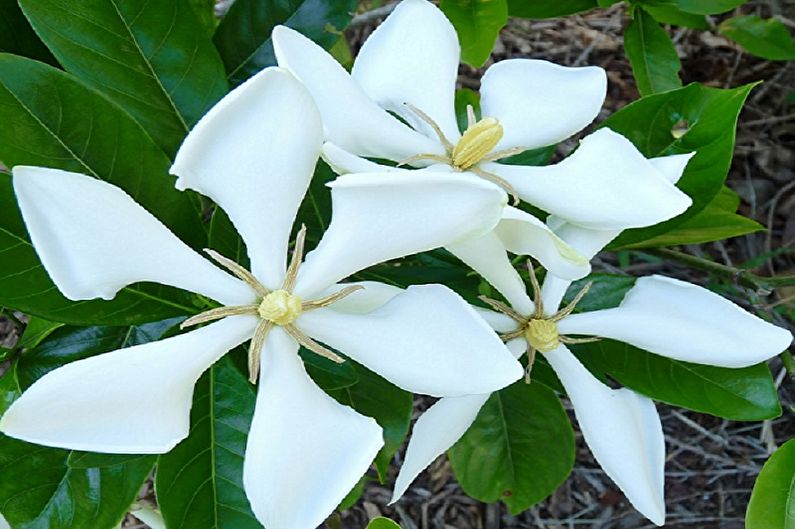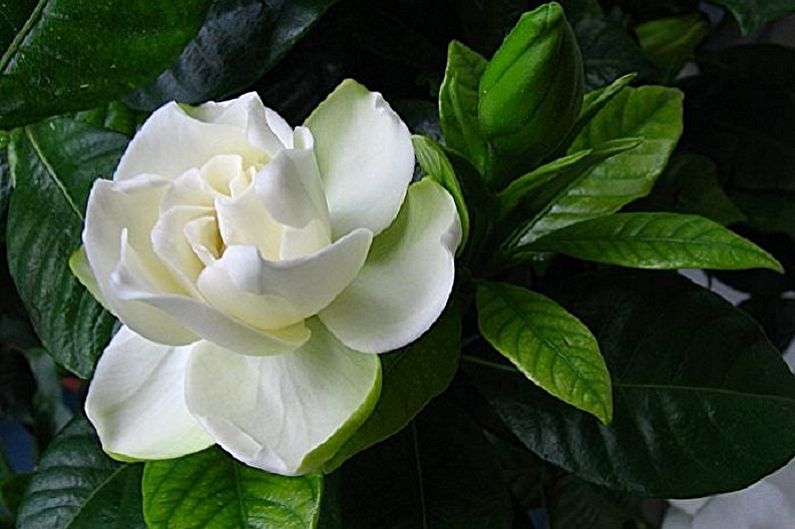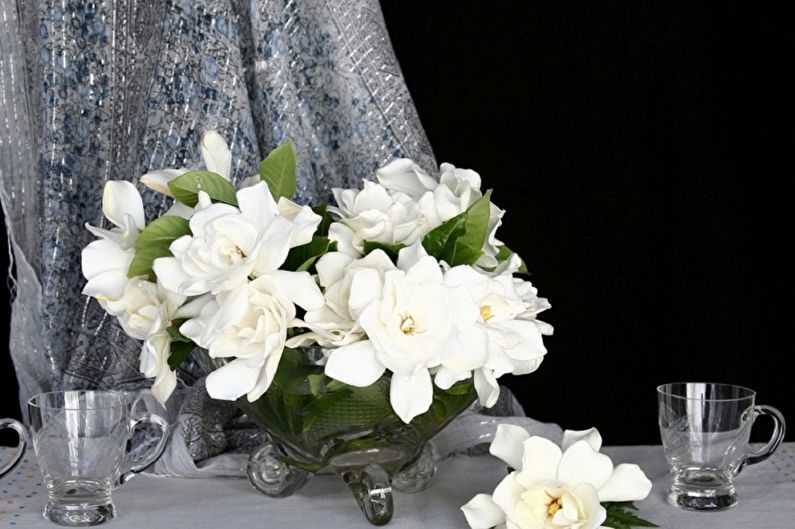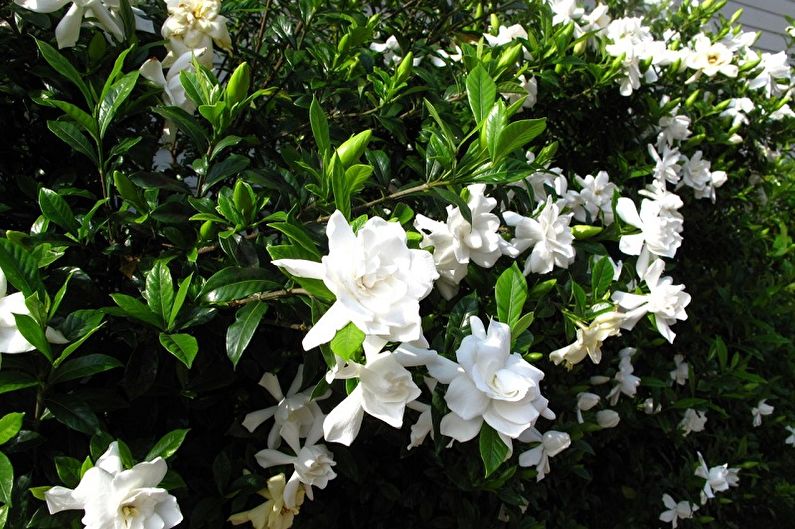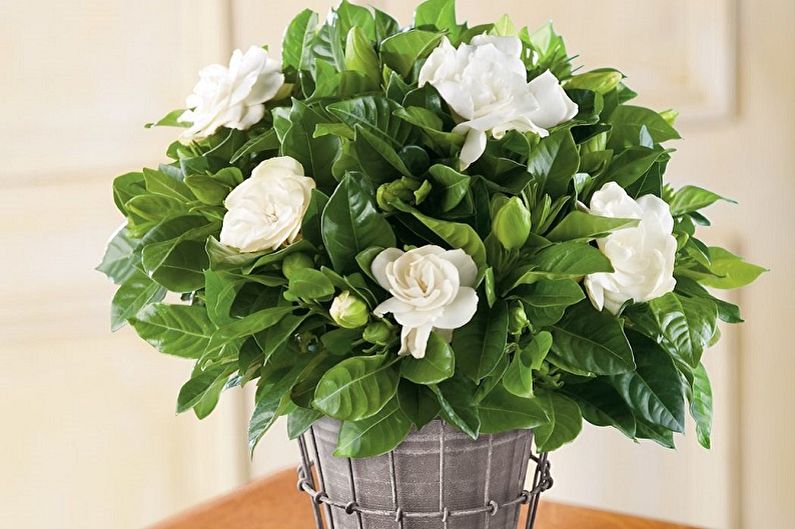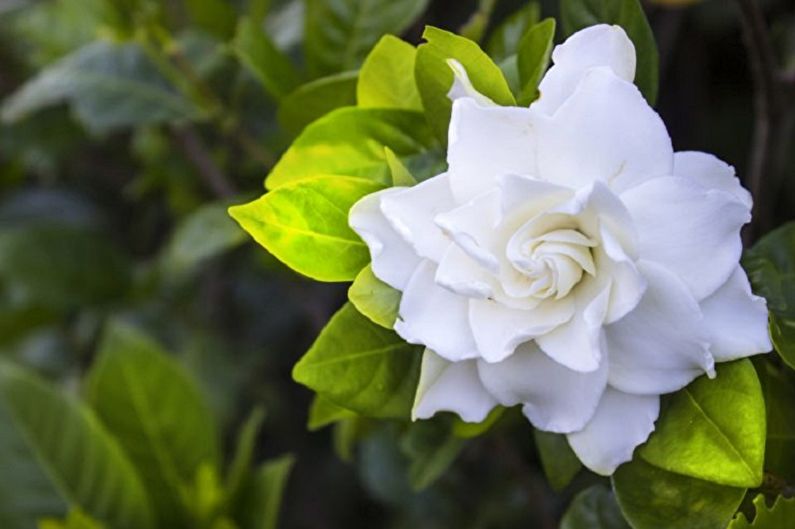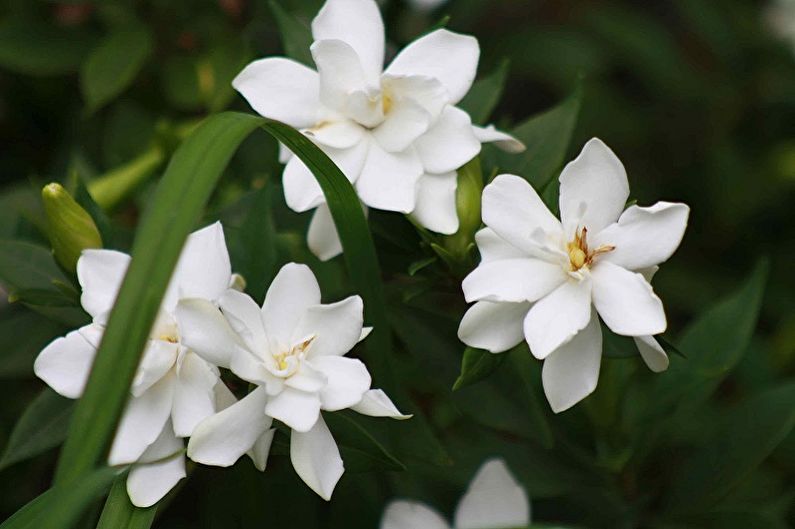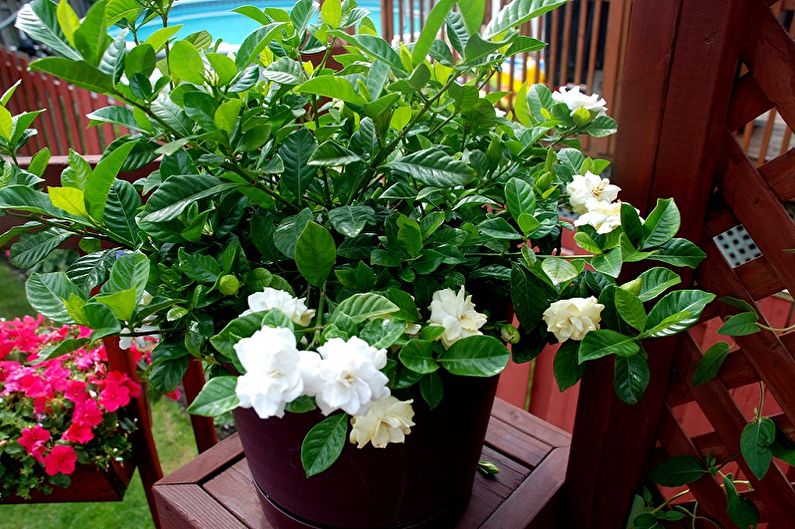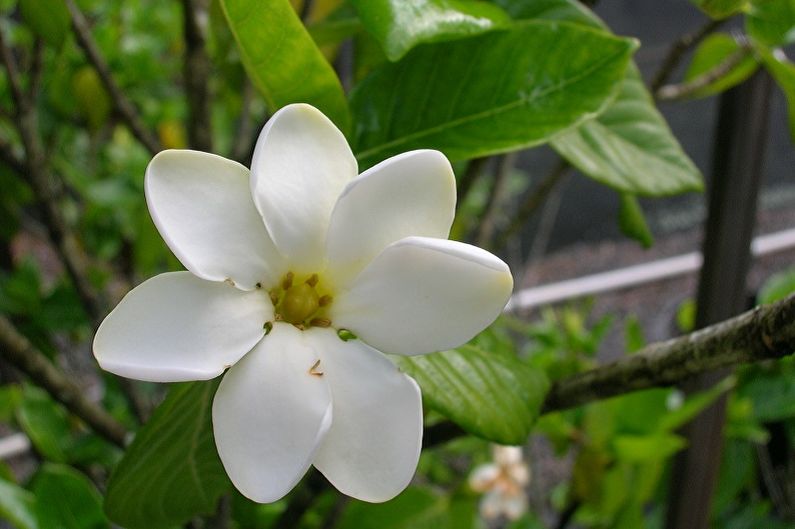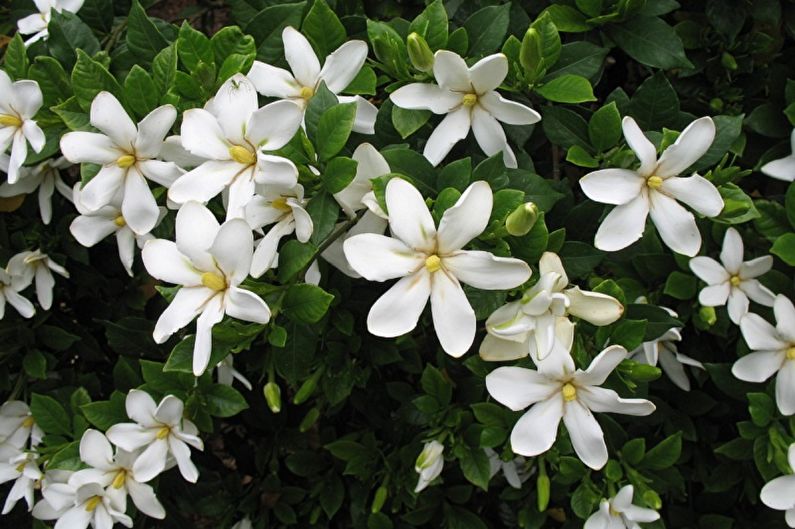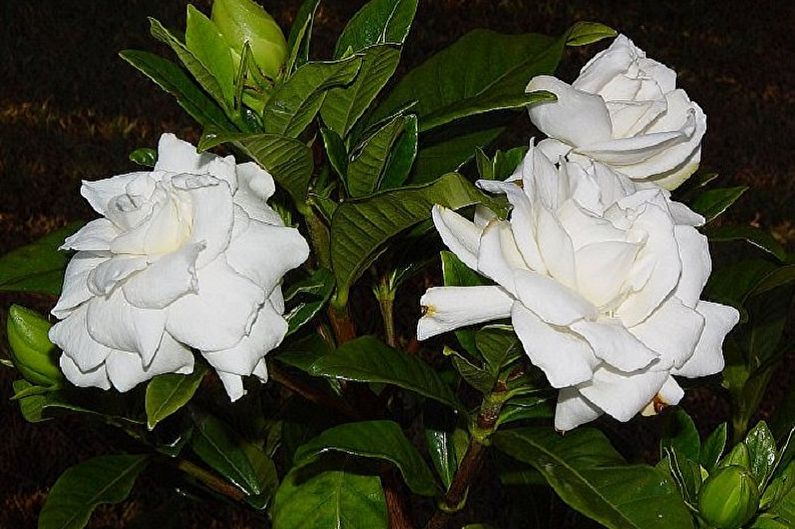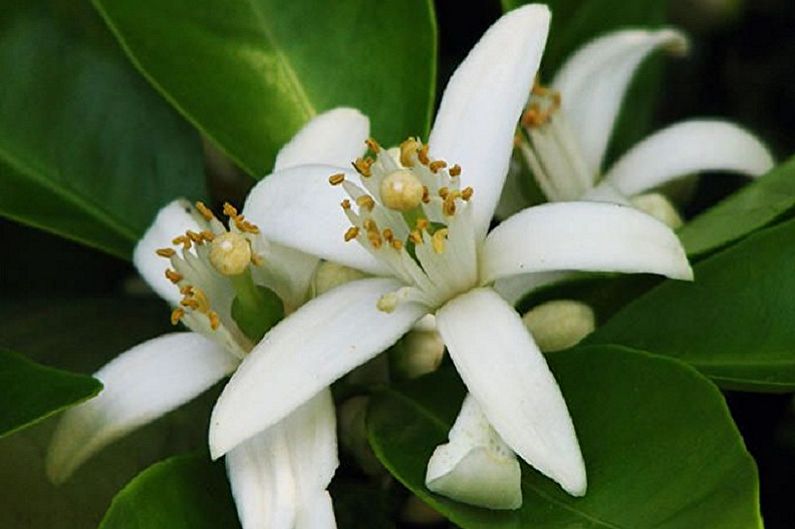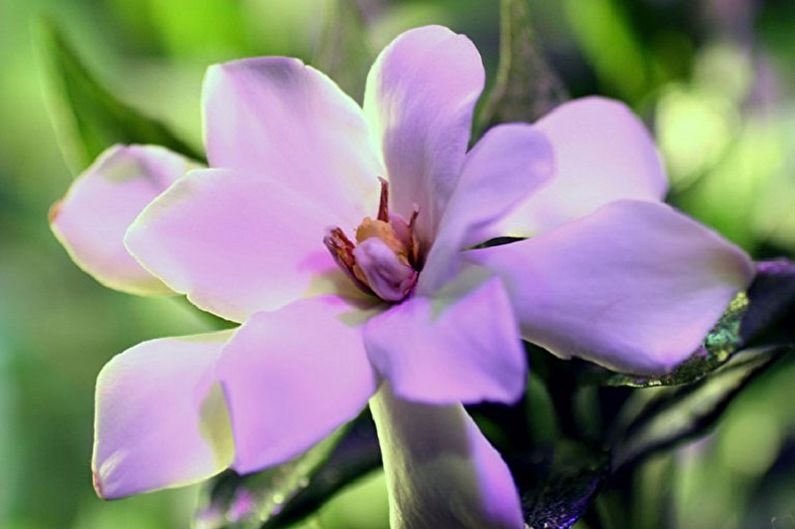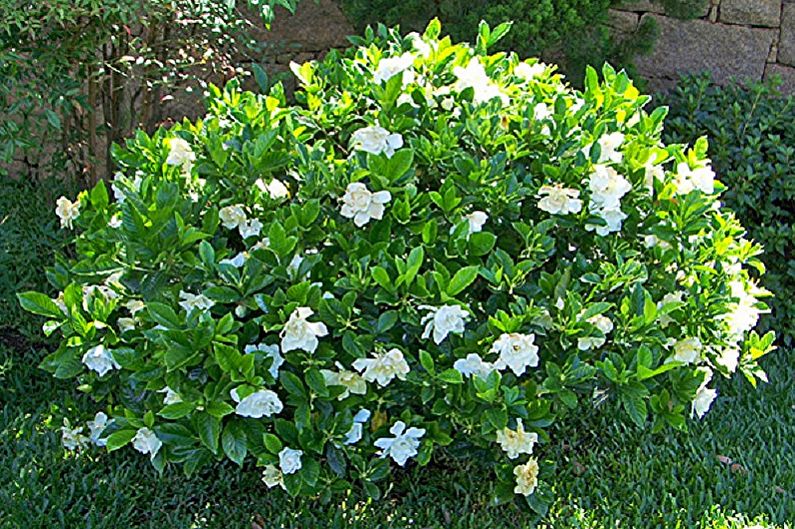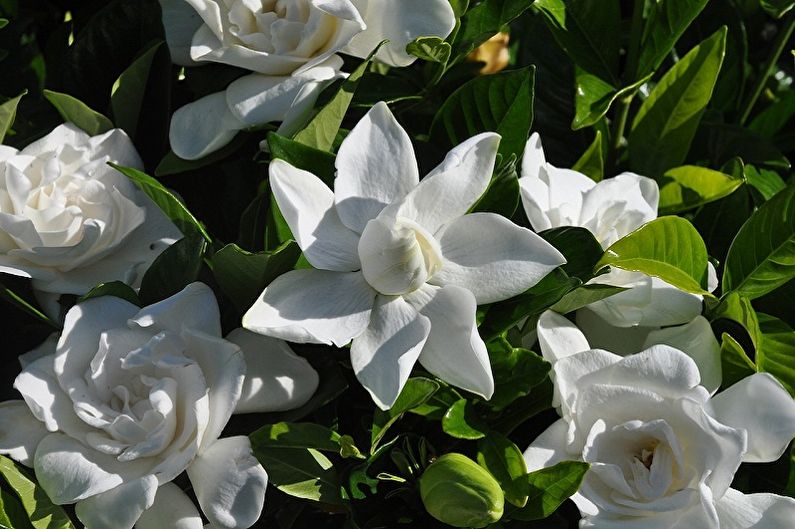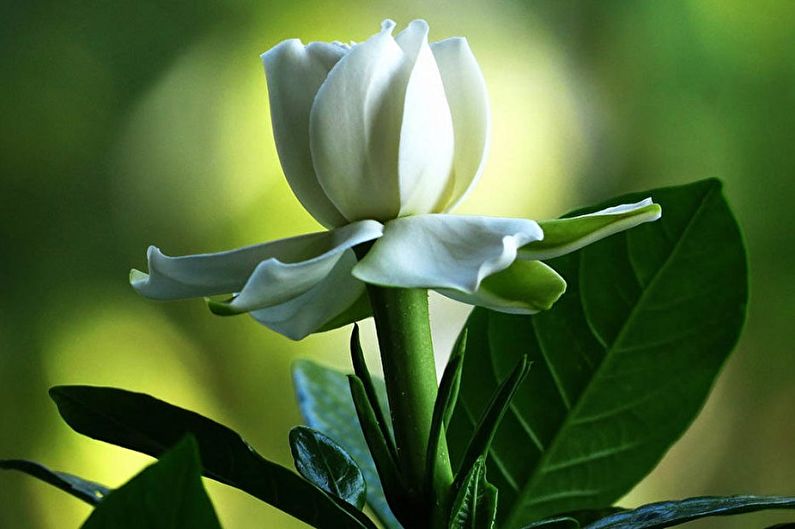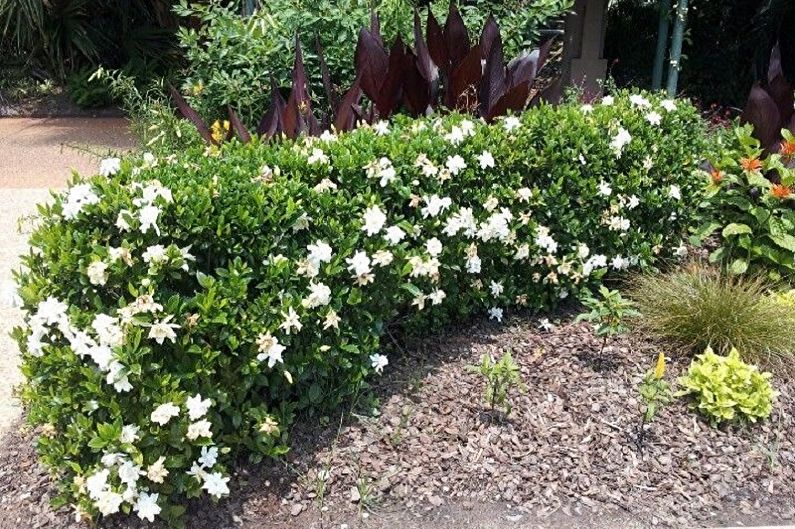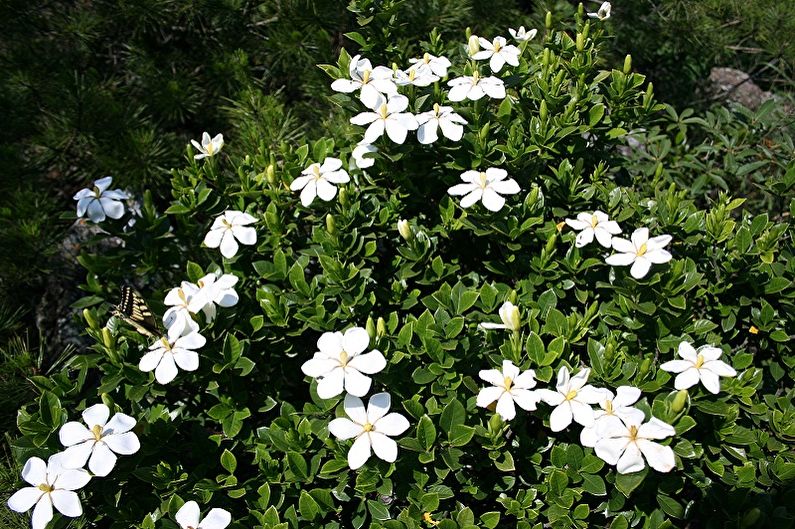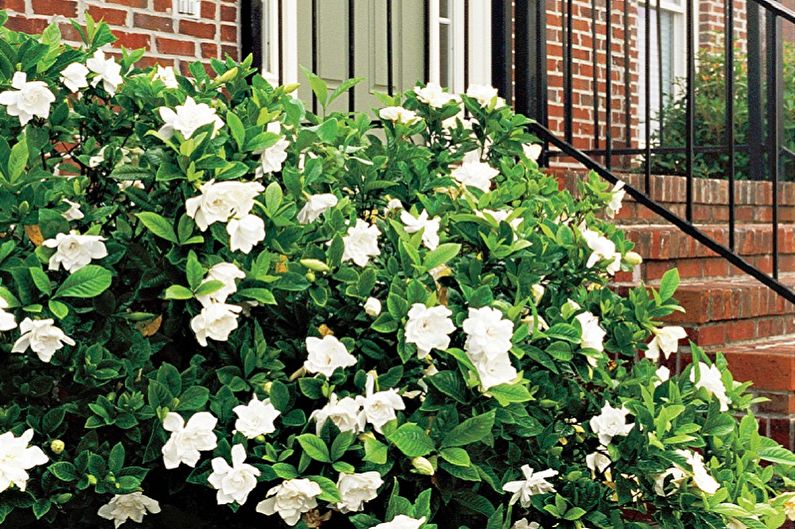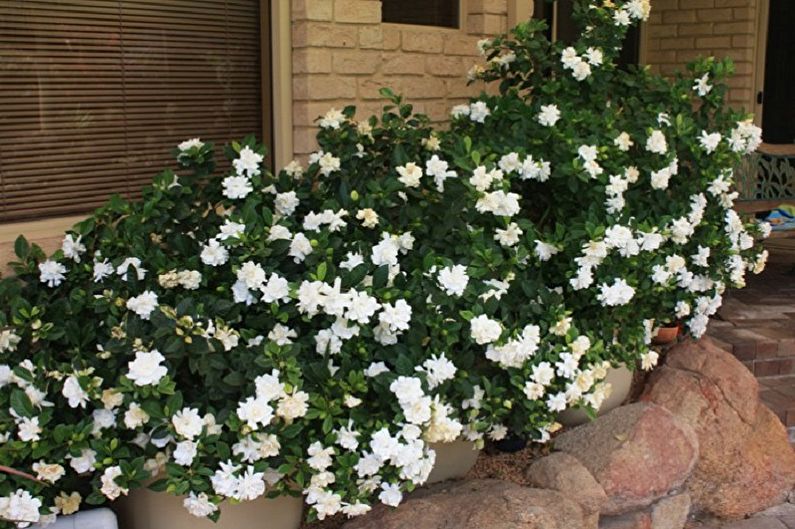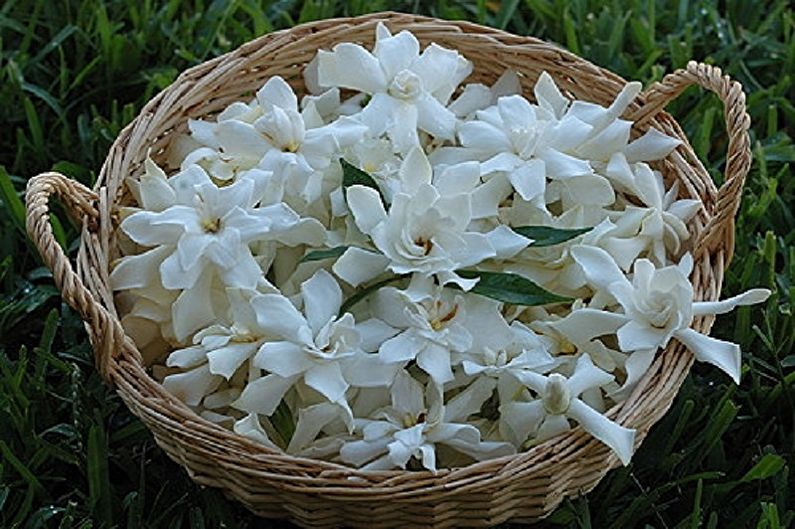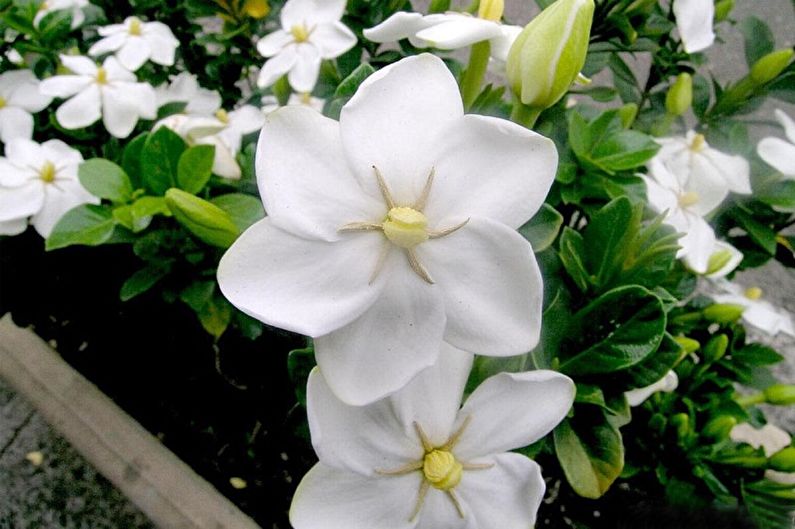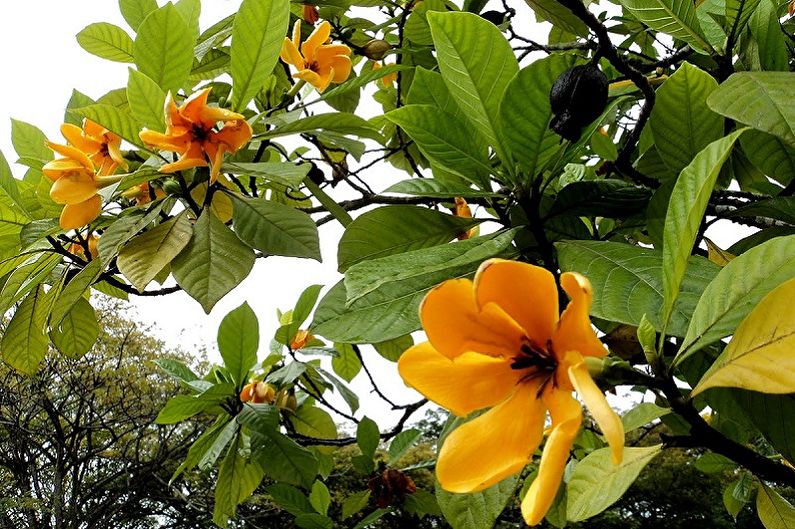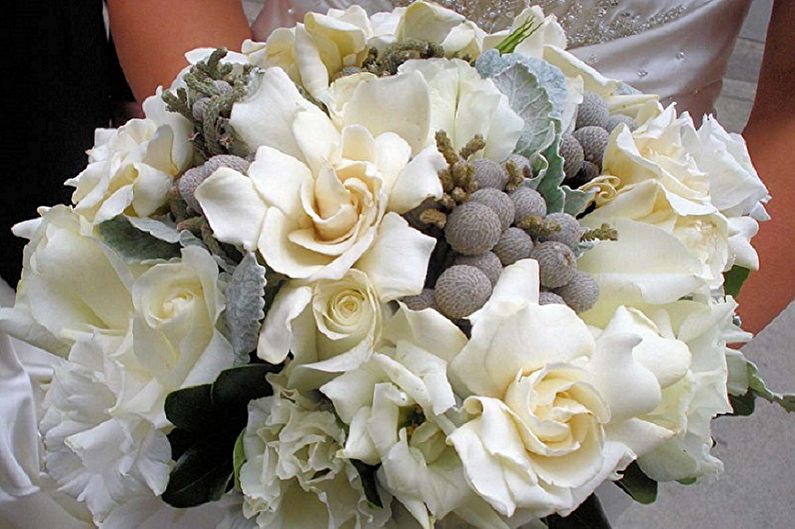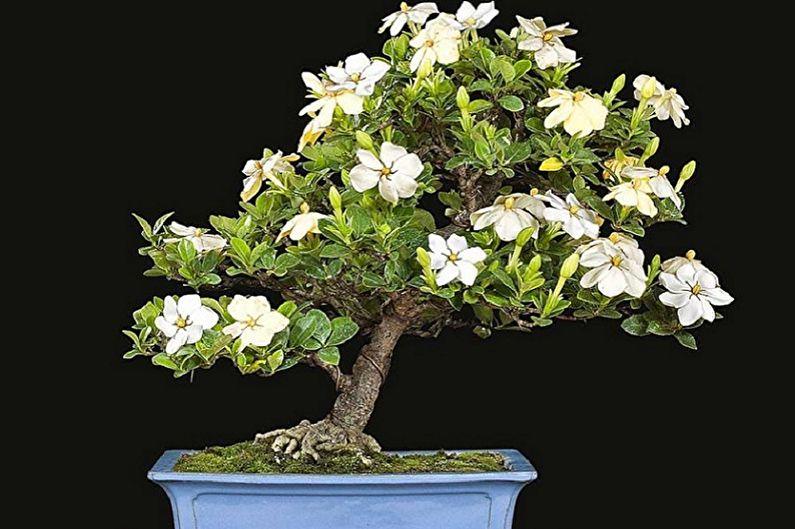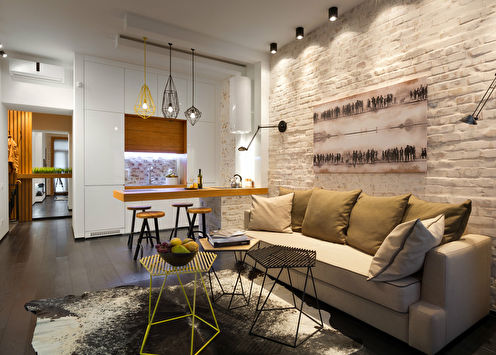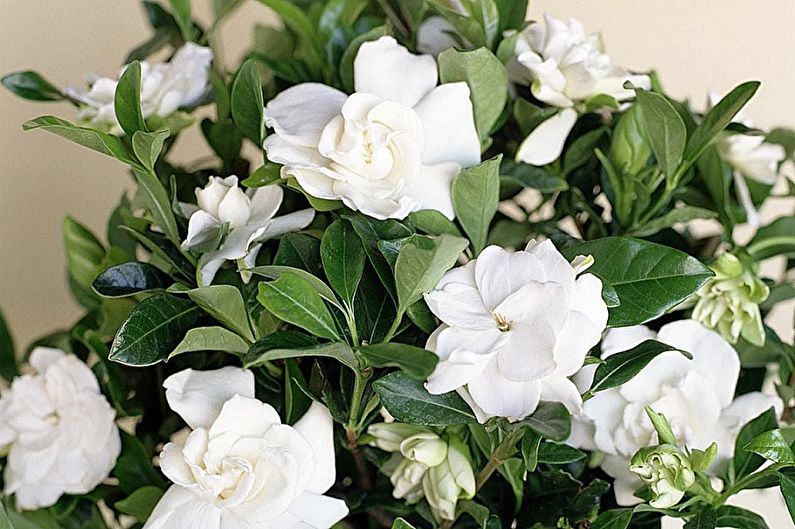
Gardenia is an amazingly beautiful plant that grows in the rainforests of Japan, India and China. It got its name from the name of the American botanist Alexander Garden, who is studying this culture. With its excellent flowering, the plant pleases from July to late autumn. Under natural conditions, some shrubs reach a height of two meters, while in cultivation, it does not exceed a meter. This is truly one of the most popular flowers used in wedding floristry, serving as a worthy decoration of tables, halls, wedding bouquets.
The main types
In nature, there are up to 250 species of this wonderful plant. However, for growing in apartments and garden plots, more popular decorative crops are used.
Jasmine Gardenia
This species is most often chosen for cultivation in apartments, as it perfectly adapts to these conditions. Jasmine gardenia has the appearance of a dense, sprawling bush up to 80 cm high. Glossy dark green leaves with a pointed edge are up to 8 cm long. Flowers similar to roses stand out proudly with their snow-white color. Over time, the petals take on a yellowish tint, so on the bush you can immediately see white, cream and yellowish buds. The most common varieties are:
- “First Love” with fragrant creamy white flowers, with a diameter of up to 13 cm;
- “Variegata” - characterized by its green leaves, covered with a whitish-marble pattern and white double flowers;
- “Fortune” - its buds in open form have a diameter of 10 cm.
This species has a second, perfectly justified name “Royal” due to its decorative effect. It has many other varieties bred by selection, each of which differs in shape, size, color of foliage and buds, as well as the duration of flowering.


Vietnamese gardenia
This type of gardenia can be a compact tree or a lush sprawling bush. The dense cover of leaves has a beautiful shiny surface, and large snow-white flowers up to 8 cm in diameter have rather unusual petals, curled up into bizarre long tubes.
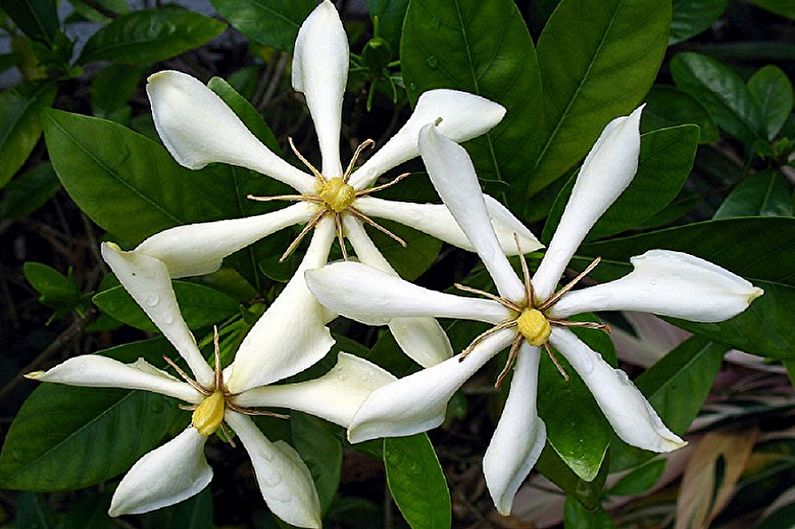
Yellow gardenia
A neat tree has upright stems with green glossy leaves. In the sinuses of the leaves, initially white buds bloom, which then turn yellow. Over time, the overflow of color increases from lemon to bright orange.
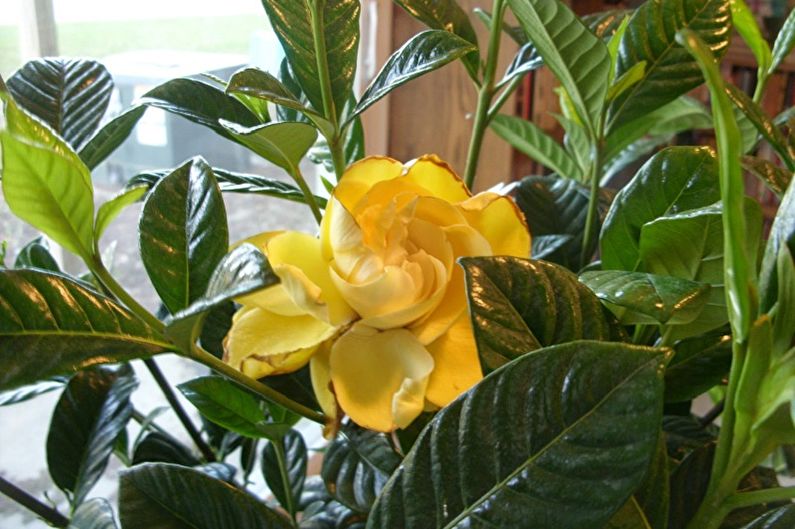
Gardenia citriodora
The luxurious bush of this type of gardenia has highly branched shoots with oval glossy leaves. Its flowering enchants with a mass of small, not more than 2 cm in diameter, white terry flowers. The plant also boasts a deliciously intense aroma.

Proper gardenia care
Gardenia is a rather whimsical culture, so an amateur gardener will have to try pretty hard to create favorable conditions. It is quite difficult to take root in a new place, even a rearrangement of a flower pot can cause shedding of buds. First of all, you need to take care of the composition of the soil - the plant prefers an acidic environment, and an excess of lime can lead to its death. You can buy ready-made soil in the store (the composition for azaleas is perfect) or make it yourself. In the latter embodiment, it is necessary that the composition contains sand, peat and three types of land: leaf, coniferous, sod. There are also requirements for lighting, watering, temperature conditions.
Lighting
Gardenia loves good lighting, but does not tolerate exposure to direct sunlight.In the garden, it is better to plant it in warm areas, creating partial shade. At home, in the summer, flowerpots are installed on window sills facing the west or east side, and in winter the culture feels better on the southern windows.
Also in winter, it is necessary to provide additional illumination using fluorescent lamps, which are installed at a distance of 50-60 cm above the crown. The room should be lit 12-14 hours. During the laying and development of buds, it is not recommended to change the position of the pot, as changing the direction of lighting can disrupt the process.
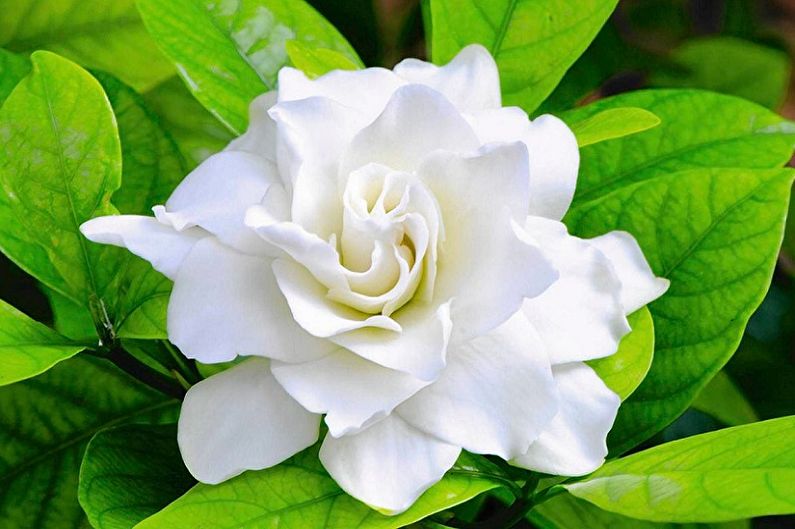
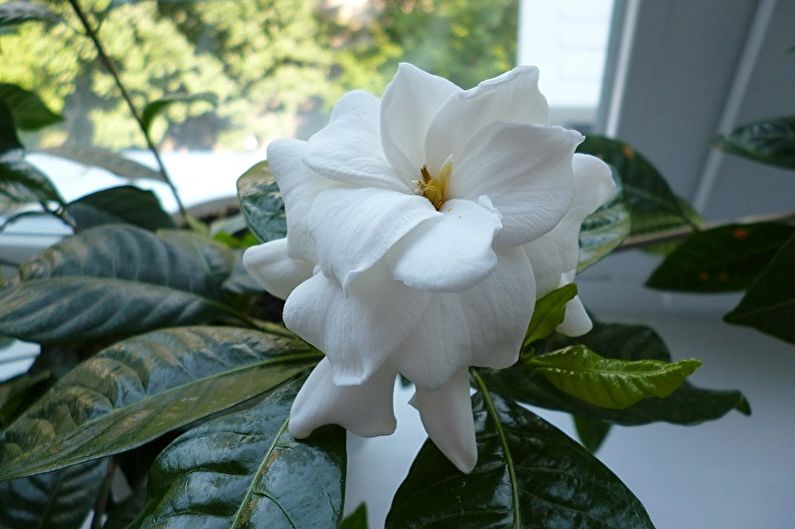
Temperature
The flower loves warmth and is afraid of temperature changes. Garden views can endure a sharp change in temperature within 6–8C. For indoor representatives, the optimal temperature regime in the spring and summer is the range from +22 to +25. In winter, you need to maintain the temperature near + 18 ... + 20С during the day, and at night - at least + 15С.
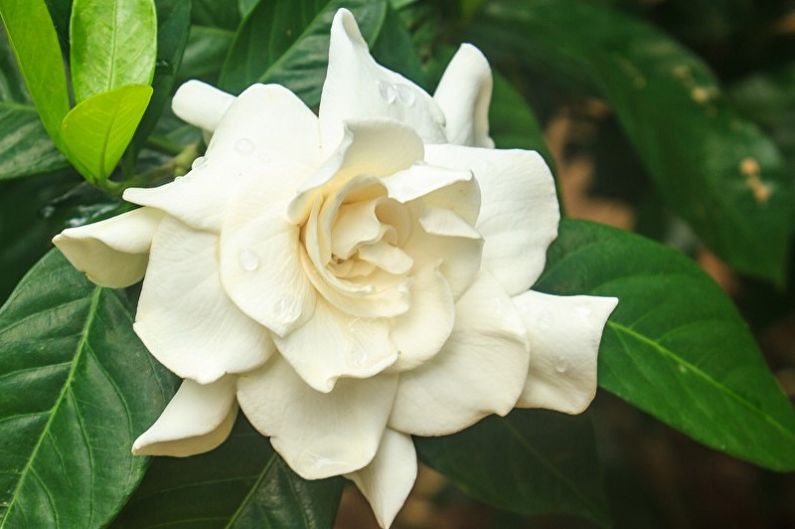
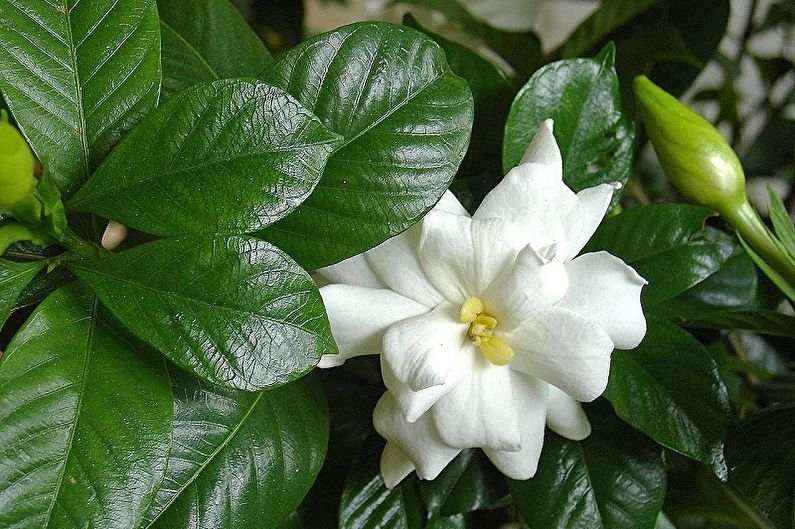
Humidity
High tropical humidity is a prerequisite during the development of buds. To create such conditions, gardenia is sprayed during this period, and the pots are placed on wet expanded clay. The pot must not be allowed to touch the surface of the water, otherwise the process of waterlogging of the soil will begin, which will negatively affect the culture. Good drainage using pebbles or expanded clay will also help protect the soil from stagnant water. When the buds begin to blossom, the spraying stops, and moisturizing occurs by wiping the leaves with a damp cloth.
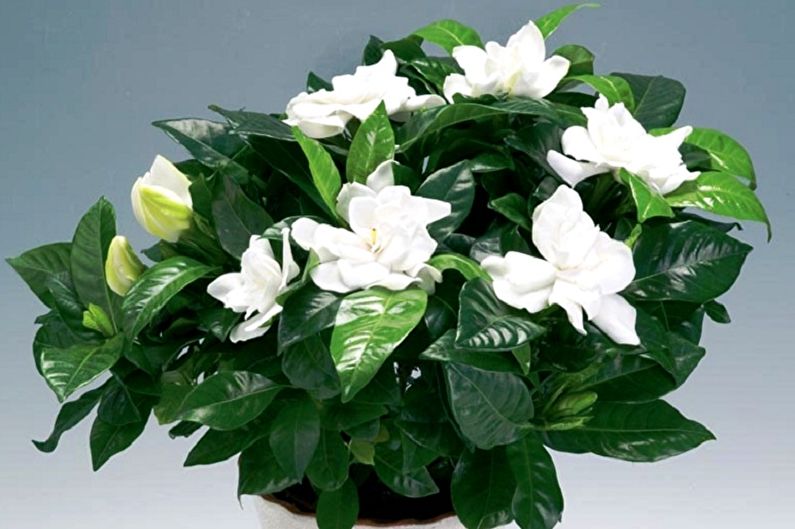
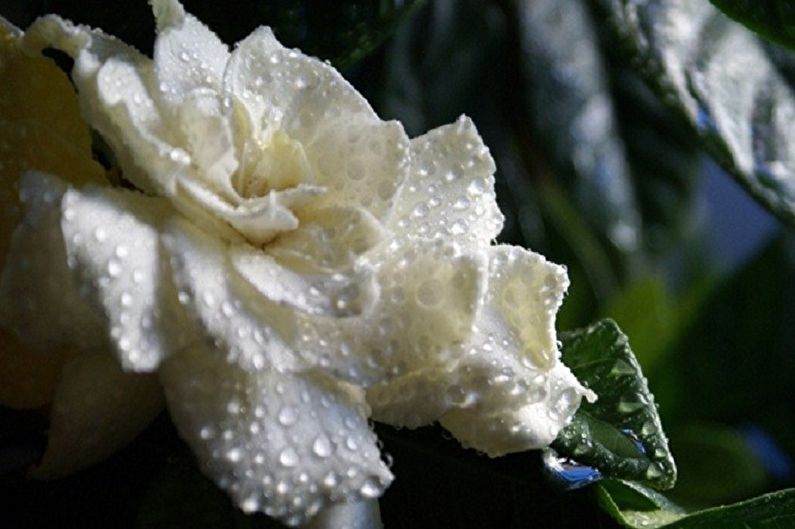
Watering
For gardenia, both dry soil and waterlogged are detrimental - water stagnation can lead to diseases of the root system. In the spring-summer period, it is necessary to provide especially abundant watering, and in winter - moderate. It is impossible to drink gardenia with cold water; it is better to use settled, filtered soft water.
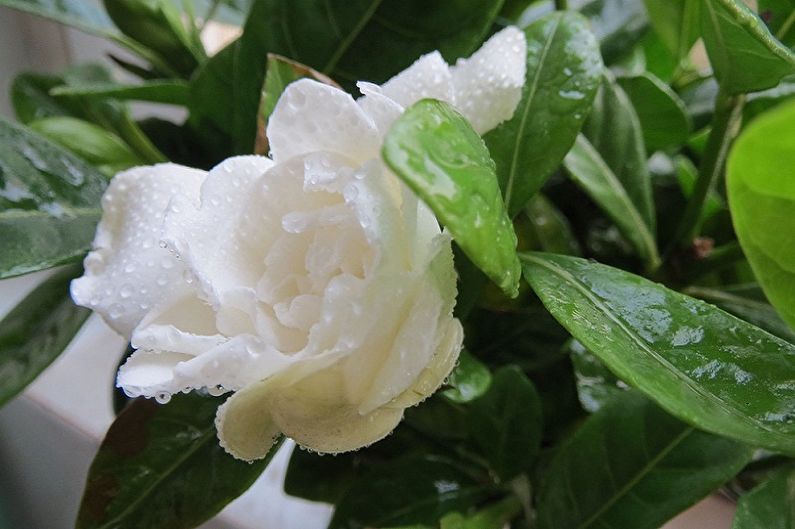
Fertilizer and fertilizing
Like most tropical plants, gardenia loves alternating organic and mineral fertilizers. Feeding is especially important for young plants - fertilizers are applied alternately every two weeks. Adult crops need plentiful fertilizer from the beginning of spring until late autumn. Every week, it is necessary to nourish the bushes with a composition in which there is no calcium. Quite often, liquid fertilizers with a high content of potassium are used.
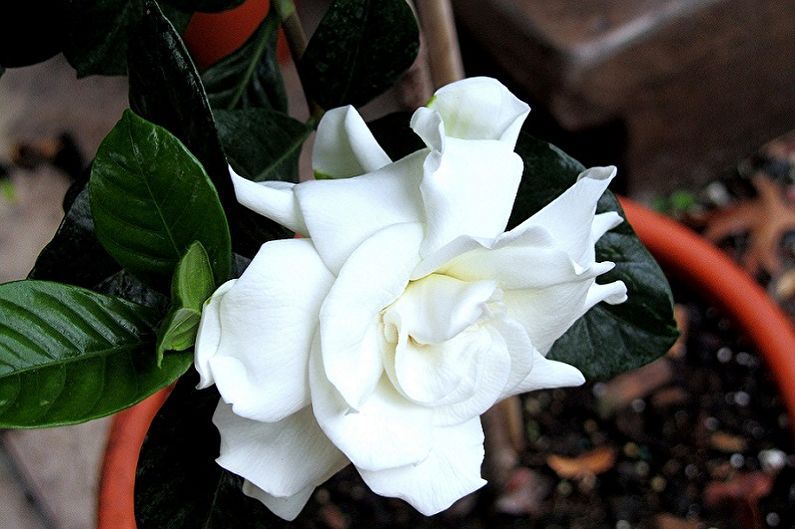
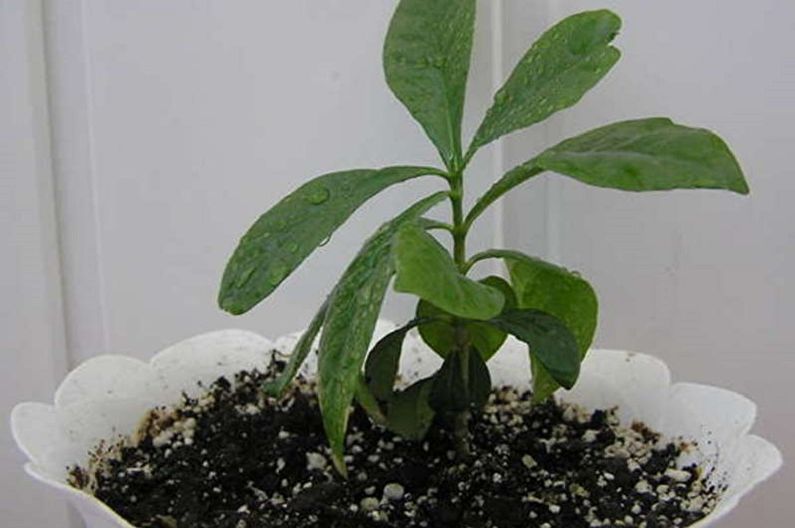
Pests and diseases
As mentioned earlier, gardenia is rather whimsical to conditions. If you do not take care of creating the necessary microclimate, the plant may become ill. The most common problems are related to waterlogging. As a result of decay of the root system, the flower begins to fade, blacken, and massive falling of leaves and buds is possible. In this case, it is necessary to remove the plant from the pot, separate the damaged part of the root, add drainage and replace the soil. After transplanting, you must carefully monitor the watering.
Culture quite often becomes a favorite treat of various pests. The greatest harm to it is caused by thrips, aphids, scale insects, and spider mites. Their appearance can be determined by various signs, for example, the presence of scabies is characterized by the appearance of brown spots, thrips leave grayish dots on the leaves, aphids sticky secretions, and the appearance of a spider web indicates that the plant is attacked by a tick. In the fight against pests, insecticides such as Decis, Intavir, etc. are used. In mild cases, even a single spray can help, in complex cases, three times a treatment every 10 days may be needed.
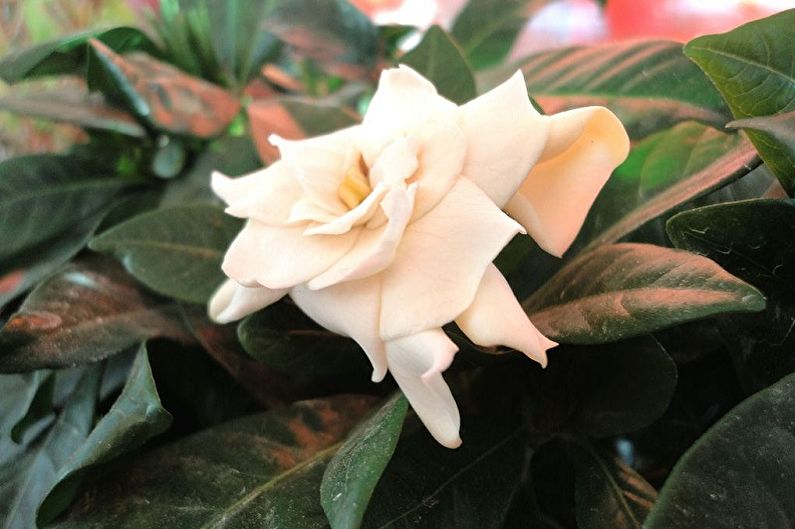
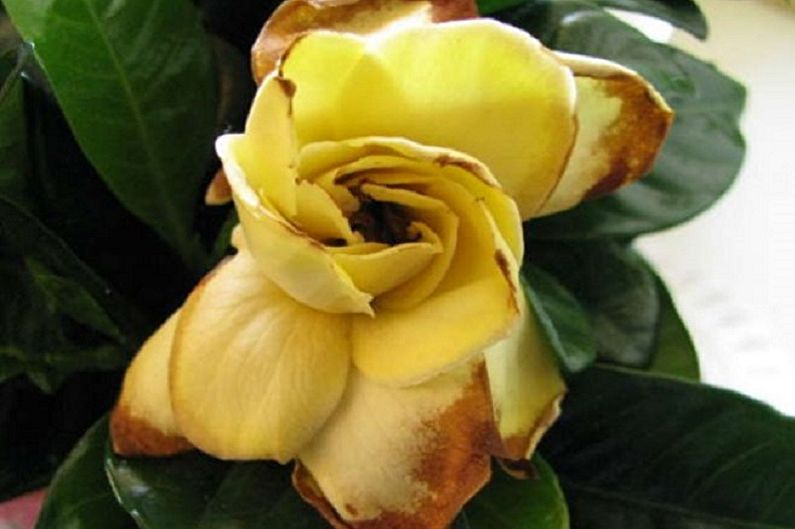
How to transplant gardenia
Since gardenia can be grown indoors or in the garden, we will consider separately how to properly transplant it in a particular case.
Open transplant
A transplant is best done in the spring, so that there is time to take root.The first thing to take care of is to choose a sunny place with a small shadow that will protect the plant on hot days from “tanning”. In this case, it is important to observe the distance from other bushes and trees, so that the root system has sufficient space for development. Gardenia is often planted near windows and a porch to enjoy the beautiful aroma of flowering. If the soil has high acidity, you can dilute it with a mixture of compost and sulfur.
The site must be abundantly watered and a hole dug so deep that the root ball fits. Planted gardenia should be sprinkled with earth and watered well again for tamping. The ground around the bush needs to be covered with a layer of mulch, which will protect the roots from possible temperature changes. The first few days, it is necessary to ensure regular watering, making sure that water does not fall on the leaves.
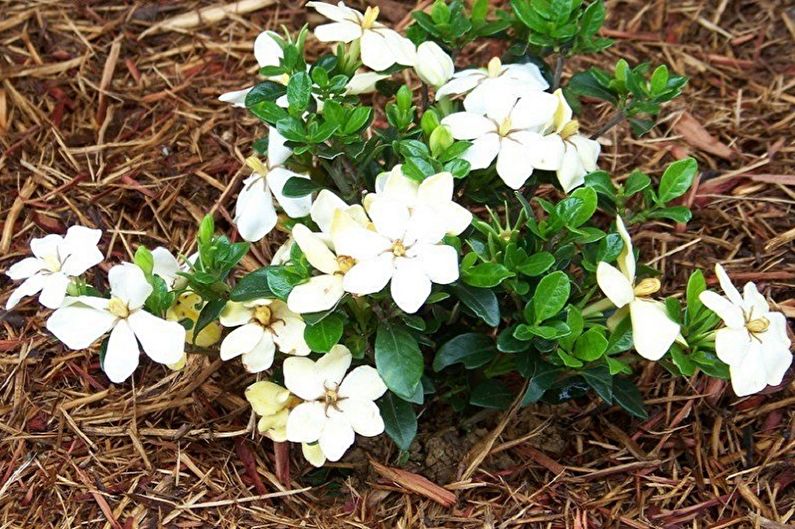
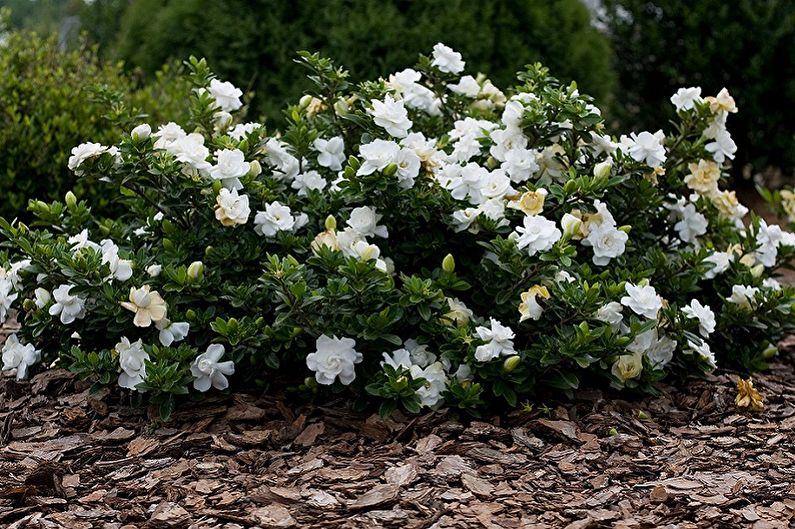
Transplant into a pot
Gardenia is transplanted every two years in the spring. Each time you need to take the pot a little more than the previous one. The bottom must be equipped with drainage, and the soil mixture should be selected suitable for indoor plants without fertilizers. The soil must be moistened and mixed so that air pockets do not form. The bush is set in the center of the tank and sprinkled. You can add liquid fertilizer at the same time as watering. There should be a distance of 2.5 cm from the edge of the pot to the ground cover. It is advisable to place the freshly planted plant in a sunny place. Watering is necessary once a week, preferably in the morning.
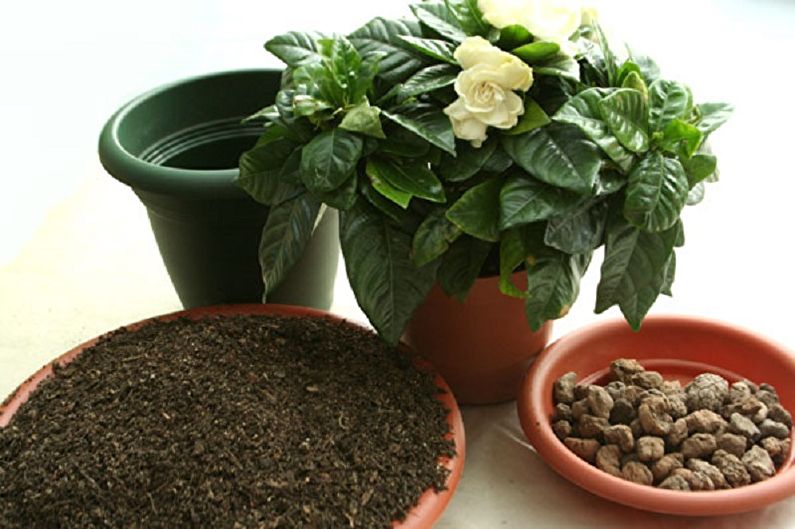

Propagation at home
There are two ways to propagate gardenia - seeds and cuttings. According to gardeners, growing from seeds contributes to a better adaptability of the plant to room conditions. But this process requires compliance with many conditions, and it is still easier for beginning florists to increase the number of seedlings by cuttings.
Gardenia propagation by seeds
Sowing is carried out in the spring. Seeds to a depth of about 5 mm are planted in a container with loose garden soil. It is necessary to organize a greenhouse by covering the container with a bed of film or glass. Planting must be kept at a temperature of + 18 ... 20C, regularly airing and spraying the soil (it is important to create high humidity). After about a month, the first shoots will appear, which at first grow quite slowly and continue to be kept in “greenhouse” conditions until the second pair of leaves appears. The grown seedlings are dived into individual pots and placed in a warm, well-lit place.

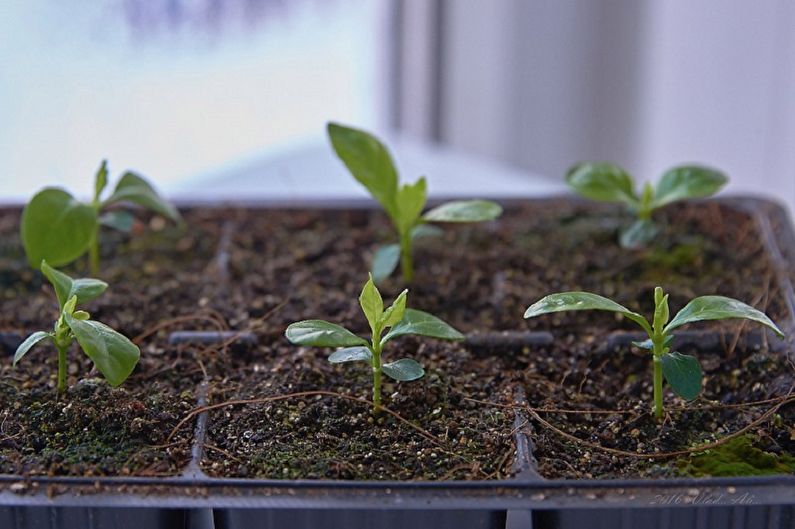
Gardenia propagation by cuttings
This method is considered simpler. In spring, you need to cut shoots (10-12 cm) with several pairs of leaves. Cuttings are planted in sandy peat soil. To maintain humidity, you can cover the shoots with film or plastic bottles, but always transparent, so that enough light arrives. The rooting process continues for a month and a half. With the advent of roots, new shoots will begin to develop.
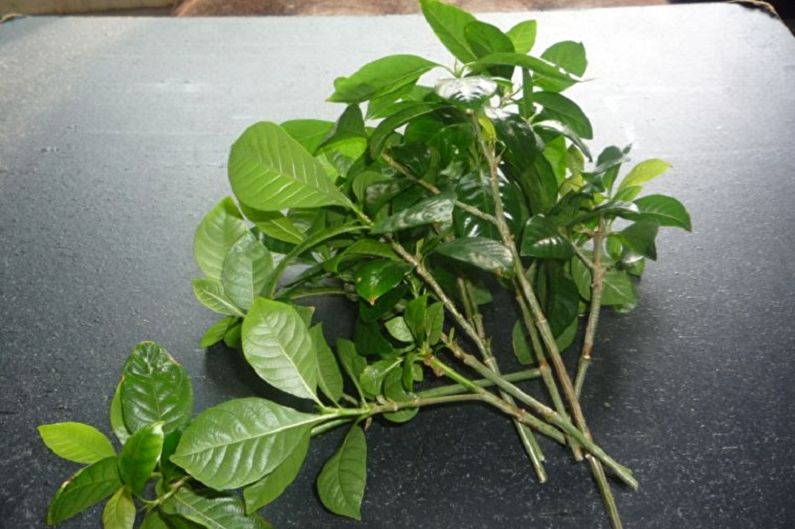

Gardenia - photo
Our photo collection will tell more about this wonderful plant, its stunning beauty. Here are collected high-quality images of the most diverse types of gardenia, examples of decorating with their help garden plots and interiors. Enjoy watching!
